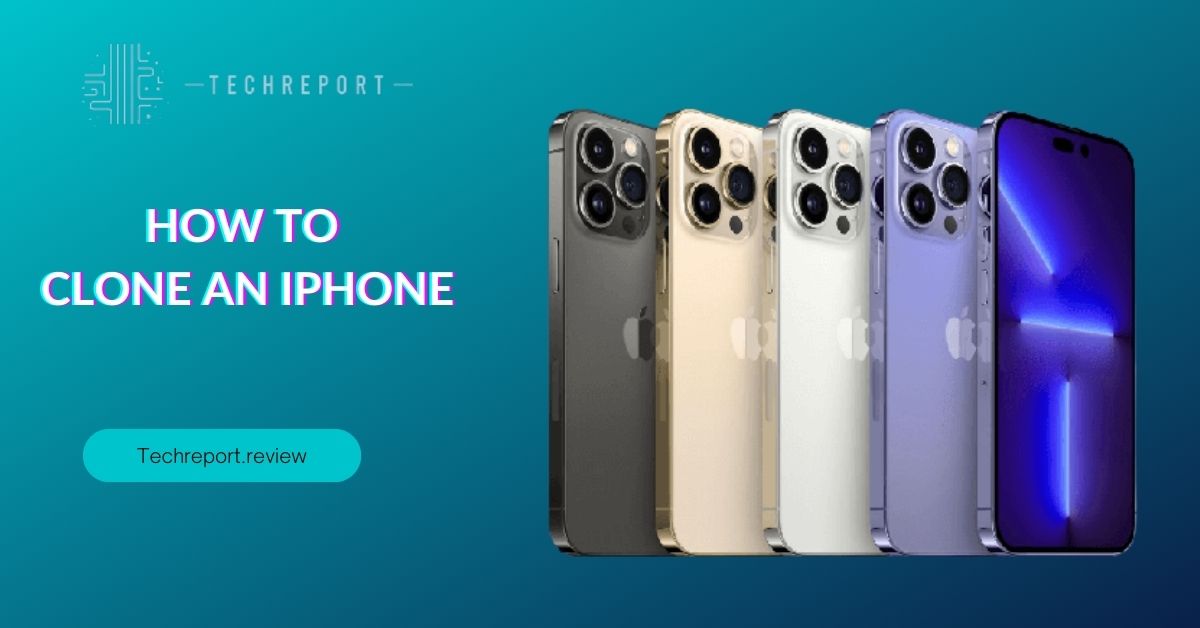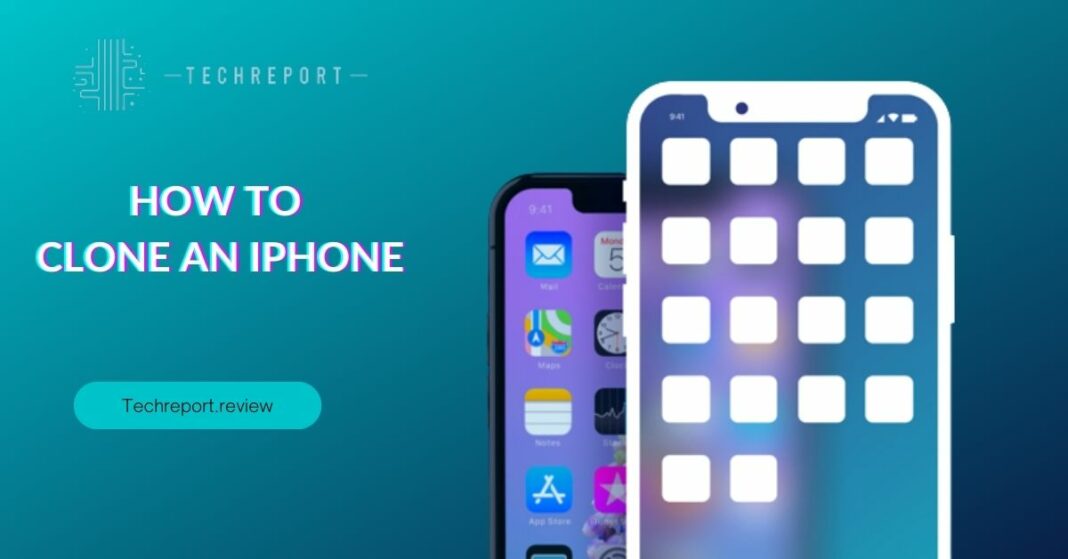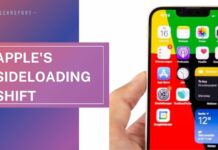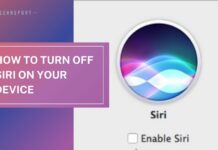In the fast-paced digital era, the need for efficient data transfer and seamless device duplication has become paramount for iPhone users. Whether you’re upgrading to a new iPhone or wish to duplicate your device’s settings and data, iPhone cloning emerges as a powerful solution. Cloning an iPhone allows you to replicate all your data, settings, apps, and even the layout of your home screen onto another iPhone, streamlining the transition and saving valuable time.
The purpose of this blog is to be your ultimate guide in demystifying the process of iPhone cloning. We’ll walk you through each step with clarity and precision to ensure a successful cloning experience. Whether you’re a tech enthusiast looking to explore the latest data transfer methods or a regular iPhone user seeking a hassle-free way to migrate your data, this guide is tailored to meet your needs.
The rising popularity of iPhone cloning can be attributed to its convenience and effectiveness. As users accumulate a wealth of data, photos, contacts, and personalized settings on their iPhones, transferring all this information to a new device can be a daunting task. Cloning presents a compelling solution by offering a replica of your existing iPhone experience on a new one. However, it is crucial to explore legal and secure methods of iPhone cloning to protect your data and ensure a smooth transition. Throughout this blog, we’ll address best practices to ensure a safe and reliable cloning process. So, let’s embark on this cloning journey and unlock the potential of seamless device duplication on your iPhone!
Understanding iPhone Cloning

iPhone cloning is the process of creating an exact copy or replica of all the data, settings, apps, and content from one iPhone to another. This powerful feature streamlines the migration of data between iPhones, making it incredibly convenient for users who are upgrading to a new device or need to duplicate their current iPhone’s setup. When you clone an iPhone, you essentially transfer everything from the source device to the target device, ensuring a seamless and familiar experience on the new device.
It’s essential to address the legality of iPhone cloning to ensure users understand the implications of this process. Cloning an iPhone is generally considered legal as long as you are transferring data from one device you own to another device you own or have permission to access. However, it’s crucial to respect privacy and security concerns when engaging in iPhone cloning. Avoid attempting to clone someone else’s iPhone without their explicit consent, as it can violate privacy laws and ethical standards.
iPhone cloning proves beneficial in several scenarios. Firstly, when you upgrade to a new iPhone, cloning allows you to effortlessly transfer all your data and settings, sparing you the hassle of manually setting up the new device. Secondly, if you have multiple iPhones and want them all to have the same configuration and data, cloning can be a time-saving solution. Additionally, for business or organizational purposes, iPhone cloning can ensure consistent app installations, settings, and device configurations across a fleet of iPhones, enhancing productivity and standardization.
In summary, iPhone cloning offers a convenient way to transfer data and settings between iPhones, promoting a seamless transition to a new device or enabling consistency across multiple devices. While it is legal when done responsibly and within the boundaries of privacy, users should exercise caution and ensure they have proper ownership or permission when engaging in iPhone cloning.
Legal Methods for iPhone Cloning
When it comes to iPhone cloning, it is crucial to follow legal methods that respect user privacy and data protection. The most reliable and secure approach is to utilize official Apple services and features designed explicitly for data transfer and device duplication. Apple provides built-in tools and services that ensure a seamless and legitimate cloning process while safeguarding user data.
One of the most prominent and widely used methods is the “iPhone Backup and Restore” feature through iCloud or iTunes. With iCloud Backup, users can create a backup of their current iPhone, and then restore that backup onto the new device, effectively cloning the old iPhone’s data and settings onto the new one. Similarly, using iTunes on a computer allows users to back up their iPhone and then restore that backup onto the new device.
Trusted third-party tools and applications can also be used for iPhone cloning, as long as they comply with legal requirements and user consent. However, it is essential to exercise caution and verify the legitimacy and reputation of such tools before using them. Stick to well-known apps or software that have received positive reviews and have been endorsed by reputable sources.
Apple’s “Move to iOS” app is another legitimate option for those switching from an Android device to an iPhone. This app enables seamless data transfer, including contacts, messages, photos, videos, web bookmarks, and more, from an Android device to an iPhone. It ensures a smooth transition without compromising data integrity or user privacy.
It is crucial to be aware of the risks associated with using unauthorized or illegal methods for iPhone cloning. Engaging in illegal activities, such as using counterfeit software or unauthorized cloning services, can lead to severe consequences, including violating copyright laws and compromising the security of your data.
Unauthorized methods may expose your personal information and sensitive data to malicious actors, putting your privacy at risk. Additionally, using pirated or unauthorized software can lead to technical issues, data corruption, and even permanent data loss. To avoid such risks and ensure a safe and legal iPhone cloning experience, it is best to stick to official Apple services or trusted third-party tools with a proven track record of legitimacy and security.
In conclusion, legal methods for iPhone cloning involve using official Apple services like iCloud Backup and iTunes or trusted third-party tools with a good reputation. These methods ensure a secure and seamless transfer of data and settings between iPhones while adhering to user privacy and data protection laws. Avoid using unauthorized or illegal methods, as they can lead to serious consequences and jeopardize your data security.
Step-by-Step Guide to Cloning an iPhone
Cloning an iPhone to another device can be a straightforward process when using either iTunes or iCloud. Below is a step-by-step guide to help you successfully clone your iPhone:
Backup Your Current iPhone
Before you begin the cloning process, it is essential to create a backup of your current iPhone. You can use either iTunes on a computer or iCloud to perform the backup. For an iCloud backup, go to Settings > [Your Name] > iCloud > iCloud Backup, and tap “Back Up Now.” To use iTunes, connect your iPhone to a computer, open iTunes, and click “Back Up Now.”
Prepare Your New iPhone
Ensure that your new iPhone is charged and turned on. Follow the on-screen setup instructions until you reach the “Apps & Data” screen.
Choose a Cloning Method
On the “Apps & Data” screen, you will see several options. Select “Restore from iCloud Backup” if you backed up your old iPhone using iCloud, or choose “Restore from iTunes Backup” if you used iTunes for the backup.
Stable Internet Connection
For iCloud backup restoration, ensure that your new iPhone has access to a stable and reliable Wi-Fi network. This will allow a seamless transfer of data from iCloud to your new device.
Updated Software
Verify that both your old and new iPhones are running the latest iOS version. Outdated software can cause compatibility issues during the cloning process.
Sufficient iCloud Storage
If you opt for iCloud backup restoration, ensure that your iCloud account has enough storage to accommodate the data from your old iPhone. If necessary, consider upgrading your iCloud storage plan.
Enough Space on the New iPhone
Make sure the new iPhone has enough available storage space to accommodate all the data and settings being transferred.
Slow Backup or Restore
If the backup or restore process is taking longer than expected, ensure that your internet connection is stable and try again. You can also check for any iOS updates that might improve the process.
Incomplete Data Transfer
If you notice that certain data or settings are missing after the cloning process, ensure that you performed a complete backup of your old iPhone before starting the restoration. If necessary, repeat the backup and restore process.
Verification Errors
Occasionally, you might encounter verification errors during the restoration process. Double-check your Apple ID credentials and ensure that you are using the correct iCloud or iTunes account.
By following this step-by-step guide and being mindful of the necessary preparations, you can successfully clone your iPhone to another device using either iTunes or iCloud. In case of any issues, these troubleshooting tips can help you resolve common problems and ensure a smooth and seamless cloning experience.
Cloning an iPhone to an Android Device
Cloning an iPhone to an Android device presents unique challenges due to the different operating systems and file formats. Android and iOS have distinct architectures, which can affect the compatibility of certain data and settings during the cloning process. It’s important to note that direct cloning, similar to the process used between two iPhones, may not be feasible between iOS and Android devices.
One of the main challenges when cloning an iPhone to an Android device is the difference in data formats and app ecosystems. iOS apps are designed to work specifically with Apple’s operating system, while Android apps are developed for the Android OS. This incompatibility may lead to potential issues with app data and settings when trying to clone them directly from an iPhone to an Android device.
To address this, users can opt for third-party apps or services that offer cross-platform data transfer solutions. These apps can facilitate the transfer of contacts, photos, videos, and other essential data between iOS and Android devices. However, it’s important to choose reputable apps that prioritize data security and privacy.
Alternatively, users can manually transfer specific types of data from their iPhone to their Android device. Here are some common data transfer methods:
- Contacts: Export your iPhone contacts as a vCard (.vcf) file and then import the file into your Android device’s contacts.
- Photos and Videos: Manually transfer photos and videos from your iPhone to a computer and then move them to your Android device via USB or cloud storage services like Google Photos.
- Music and Media: Similar to photos and videos, transfer music files and other media from your iPhone to a computer and then transfer them to your Android device.
- Emails and Calendars: Sync your email and calendar accounts with your Android device. Most email providers and calendar apps offer cross-platform compatibility.
- Messaging Apps: Messaging apps like WhatsApp or Telegram may have options for data migration between iOS and Android versions of the app. Check the app’s settings for any available transfer options.
While it’s not possible to directly clone an iPhone to an Android device like you would between two iPhones, these alternative data transfer methods can help you move your essential data to your new Android device. Remember that each method may have specific limitations, and some data, such as app-specific settings or app data, may not be transferable. It’s essential to evaluate your data transfer needs and choose the method that best suits your requirements while ensuring data security and privacy.
Risks and Precautions of iPhone Cloning
iPhone cloning, while a useful process for data transfer, comes with certain inherent risks. During the cloning process, there is a possibility of data loss or corruption, especially if not performed correctly. Any interruption or error during cloning could result in incomplete or damaged data on the target device.
Additionally, when using third-party tools or services for cloning, there is a risk of encountering malicious software or unauthorized access to your data. Some unauthorized apps or services may compromise the security of your sensitive information or use it for nefarious purposes.
To mitigate the risks associated with iPhone cloning, it is essential to take necessary precautions and implement backup strategies:
- Backup Your Data: Before initiating the cloning process, back up your iPhone data using iTunes or iCloud. This ensures that you have a copy of your essential information in case of any issues during cloning.
- Use Official Services: Whenever possible, rely on official Apple services like iTunes or iCloud for cloning. These services are designed to ensure a smooth and secure data transfer process.
- Verify Third-Party Apps: If you choose to use third-party apps or services for cloning, thoroughly research and verify their reputation and security measures. Look for user reviews and feedback to gauge the app’s reliability.
- Avoid Cloning Untrusted Sources: Be cautious of cloning from unknown or untrusted sources. Never share your iPhone data with unauthorized or suspicious applications.
- Protect Sensitive Data: During the cloning process, sensitive data such as passwords, personal information, and financial details may be transferred. To protect this information, ensure that you are using a secure and reputable method for cloning.
Securing sensitive information during and after the cloning process is crucial:
- Enable Device Security: Set up a passcode, fingerprint lock, or face ID on your iPhone to prevent unauthorized access to your device.
- Clear Cache and History: Before cloning, clear your browsing history, cache, and cookies to prevent any remnants of sensitive data from being transferred.
- Delete Unnecessary Data: Remove any unnecessary or sensitive files from your iPhone before initiating the cloning process.
- Check Permissions: If using third-party apps for cloning, check the permissions they request. Only grant access to the data necessary for the cloning process, and avoid granting unnecessary permissions.
- Monitor Data After Cloning: After cloning, review your data on the target device to ensure that all information is accurately transferred. Check for any missing or corrupted files.
By following these precautions and backup strategies, you can minimize the risks associated with iPhone cloning and protect your data throughout the process. It’s essential to prioritize data security and privacy, especially when dealing with sensitive information during data transfer.
In Crux
In conclusion, iPhone cloning proves to be an invaluable process for data transfer and device duplication. Whether you are upgrading to a new iPhone or simply transferring data to another device, cloning offers a seamless and efficient solution. By replicating all your data and settings, you can easily transition to a new device without losing any valuable information.
As you embark on the journey of iPhone cloning, it is crucial to prioritize legal and secure methods. Utilizing official Apple services like iTunes or iCloud ensures a safe and reliable data transfer process. Additionally, if you choose to use third-party tools or apps, exercise caution and thoroughly research their legitimacy and security measures.
Efficient data transfer through iPhone cloning enhances the overall user experience. It enables you to seamlessly transition between devices, ensuring that you have access to your essential data and settings. Whether you’re a business professional, student, or anyone who relies heavily on their iPhone for various tasks, the ability to clone your device is a game-changer.
Moreover, with a successful iPhone cloning process, you can save time and effort that would otherwise be spent manually transferring each piece of data. The convenience and speed of cloning make it an attractive option for iPhone users who value their time and productivity.
In conclusion, iPhone cloning empowers users to manage their data effectively, enabling a smooth transition to a new device or a reliable backup for data security. By adhering to legal and secure methods and considering the potential risks and precautions, you can make the most of the iPhone cloning process. Embrace the power of cloning to optimize your iPhone experience and ensure that your data remains safe, accessible, and up-to-date across all your devices.
How much did you like our detailed How to clone an iPhone: All You Need to Know. Please share these Blogs with your friends on social media.
Related Blogs
- Is iPhone 14 Worth the Hype
- iPhone 15 Pro
- Apple CarPlay
- Apple Watch
- iPhone 6 vs Nexus 6
- Apple Vision Pro
FAQs about Cloning an iPhone
Is it legal to clone an iPhone?
Cloning an iPhone using official methods provided by Apple, such as iTunes or iCloud, is legal and encouraged. These methods ensure data privacy and comply with copyright laws. However, using unauthorized third-party apps or tools for cloning might infringe on copyright laws and pose security risks. It is essential to stick to legal methods for a safe and legitimate cloning process.
What are the steps to clone all data and settings from one iPhone to another?
To clone an iPhone, you can use iTunes or iCloud. With iTunes, connect your old iPhone to a computer, back up your data, then connect the new iPhone and restore the backup. With iCloud, back up your old iPhone to iCloud, then sign in with the same Apple ID on the new iPhone to restore the backup.
Can I clone an iPhone without using a computer?
Yes, you can clone an iPhone without using a computer by utilizing iCloud for the process. Ensure that both iPhones are connected to Wi-Fi, back up your data to iCloud on the old iPhone, and then restore the backup on the new iPhone.
Can I clone an iPhone to an Android device?
Cloning an iPhone to an Android device is challenging due to the differences in operating systems and data formats. While it is possible to transfer certain data using apps and tools, a complete and seamless cloning process between iOS and Android may not be achievable.
What data can I transfer when cloning an iPhone?
When cloning an iPhone, you can transfer almost all your data, including contacts, messages, photos, videos, apps, settings, and more. The process ensures that your new device mirrors the old one in terms of data and settings.
Does iPhone cloning require an internet connection?
Yes, iPhone cloning typically requires an internet connection, especially when using iCloud for the process. Both the source and destination iPhones need to be connected to Wi-Fi for a successful data transfer.
How long does it take to clone an iPhone?
The time it takes to clone an iPhone depends on the amount of data being transferred and the speed of your internet connection. Generally, the process can take anywhere from a few minutes to several hours.
Can I clone an older iPhone model to a newer one?
Yes, you can clone an older iPhone model to a newer one. The cloning process is not dependent on the iPhone model but rather on the iOS version and compatibility with the cloning methods provided by Apple.
Is there any special software required for iPhone cloning?
Special software is not required for iPhone cloning when using official methods like iTunes or iCloud. These tools are built into iOS and offer a seamless and secure cloning process. Third-party apps or software for cloning are not recommended, as they may pose security risks and violate copyright laws.




























